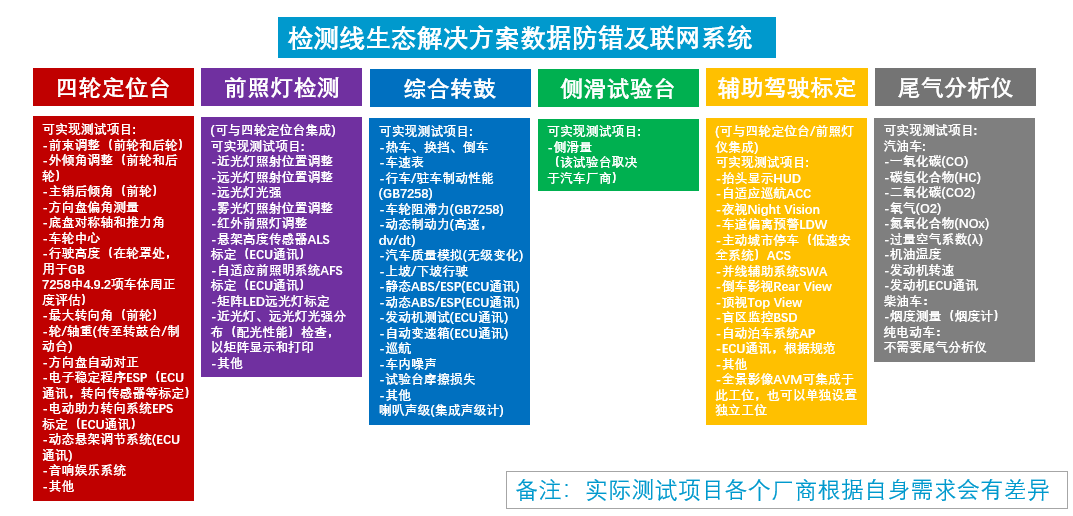Passenger car offline inspection technology
2025-07-29
To ensure all vehicles meet functional, safety, and environmental compliance requirements prior to production, a comprehensive inspection system must be implemented at assembly plants before vehicles roll off the production line. In addition to complying with the manufacturers internal standards, each vehicle must satisfy both the national standard GB7258 "Technical Conditions for Motor Vehicle Operation Safety" and the corresponding environmental regulations specified in either GB18285 "Emission Limits and Measurement Methods for Gasoline Vehicles" or GB3847 "Emission Limits and Measurement Methods for Diesel Vehicles".
As intelligent driving technologies continue to evolve, the testing and calibration of autonomous driving systems have become increasingly critical. The future technological trends in passenger vehicle safety systems will be shaped by rising safety standards, advancements in autonomous driving technology, connectivity requirements, and evolving consumer demands. Below is an in-depth analysis of these key technological developments shaping the future of passenger vehicle safety systems:
- Integrating Autonomous Driving Technologies: Future passenger vehicle safety systems will incorporate advanced autonomous driving technologies to achieve higher levels of automated driving. This includes features such as automatic emergency braking, adaptive cruise control, lane-keeping assistance, and traffic congestion avoidance, all designed to enhance both driving safety and convenience.
- Advanced sensing technologies: Passenger car safety systems will adopt more advanced sensing technologies, including higher resolution cameras, radar, lidar and ultrasonic sensors. This will improve the systems perception and enable vehicles to detect and respond more accurately to changes in their surroundings.
- Artificial Intelligence and Machine Learning: AI (Artificial Intelligence) and machine learning technologies will be widely adopted in passenger vehicle safety systems to analyze and interpret sensor data in real time, thereby improving accident prediction and prevention. Additionally, AI can drive the learning and optimization of automated systems to enhance overall safety performance.
- Vehicle-to-Vehicle (V2V) Communications: V2V communications will become part of future passenger vehicle safety systems, enabling real-time exchange of information between vehicles to alert drivers and automated systems about road conditions and other vehicles. This helps improve traffic flow, reduce accidents and improve road safety.
- High-precision mapping and positioning technology: Using high-precision mapping and positioning technology, vehicles can learn more accurately about their location and the environment around them to support autonomous driving and safety features. It can also be used for vehicle positioning, lane-level navigation and collision avoidance.
- Human-Computer Interface: Future passenger vehicle safety systems will improve the human-computer interface, enabling drivers to interact with the system more easily. This includes features such as more intuitive displays, voice recognition and gesture controls to reduce the risk of distracted driving.
- Continued regulations and standards: Government regulations and standards will continue to drive the technological development of passenger vehicle safety systems. Manufacturers need to constantly meet higher safety standards and requirements

Previous Page:
Next Page:


